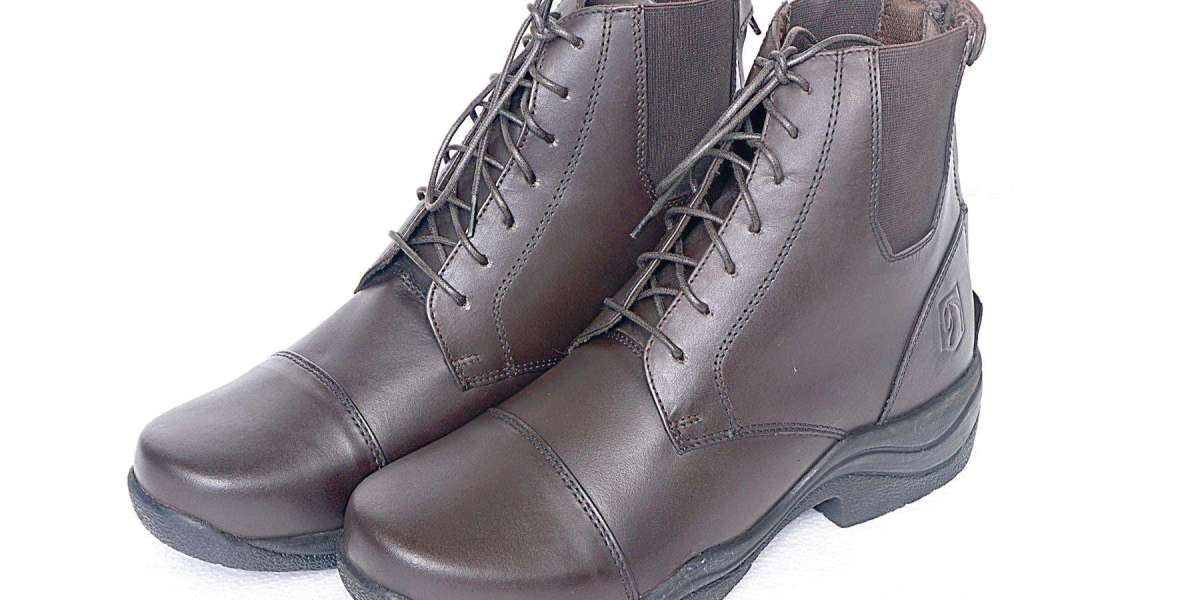Whether you're a seasoned equestrian or just starting your horseback riding journey, having the right footwear is essential. Horse riding boots provide crucial protection, comfort, and stability in the saddle. But with so many varieties available, choosing the perfect pair can feel overwhelming. This guide will walk you through everything you need to consider when selecting horse riding boots, taking you from stable chores to the show ring in style and safety.
Types of Horse Riding Boots
There are two main categories of horse riding boots: paddock boots and tall boots.
Paddock Boots (Jodhpur Boots): These ankle-high boots are ideal for everyday riding activities like schooling, lunging, and barn work. Paddock boots are typically made from leather or synthetic materials and feature a lace-up closure for a snug fit. They offer flexibility and allow for easy movement around the stable.
Tall Boots: Tall boots provide full leg coverage and are preferred for disciplines that require a more formal look, such as dressage, jumping, and fox hunting. They come in various lengths, from just above the knee to mid-thigh. Tall boots are constructed from high-quality leather for durability and structure. They often have a zipper closure on the back for ease of putting on and taking off.
Choosing the Right Material
Leather is the traditional and most preferred material for horse riding leather boots. It offers superior grip in the stirrups, breathability for comfort, and molds to your leg shape over time. Here are some common types of leather used:
Full-grain leather: This is the strongest and most durable type of leather, offering excellent protection and a luxurious feel. However, it requires regular care to maintain its suppleness.
Top-grain leather: Slightly less expensive than full-grain leather, it still provides good durability and a polished look.
Corrected-grain leather: This leather has a more uniform appearance due to buffing or sanding the outer layer. It's a good option for budget-conscious riders but may not offer the same breathability as other leather types.
Synthetic materials are also an option for horse riding boots. They are often lighter in weight, easier to care for, and more affordable. However, they may not provide the same level of grip or breathability as leather.
Fit is Key
A well-fitting pair of horse riding boots is crucial for safety and comfort. Here's what to consider:
Ankle support: Your boots should offer enough support around the ankle to prevent rolling or twisting.
Calf fit: The boots should fit snugly around your calf without restricting circulation.
Foot size: Ensure your toes have enough wiggle room but not so much that your foot slips inside the boot.
Heel height: Riding boots typically have a small heel (1-1.5 inches) to prevent your foot from slipping through the stirrup.
Additional Features to Consider
Depending on your riding discipline and needs, you might look for boots with specific features:
Stirrup guards: These protect the leather from wear and tear caused by rubbing against the stirrups.
Waterproofing: Waterproof boots are ideal for wet weather riding or working in muddy conditions.
Insulation: Insulated boots are a good choice for cold weather riding to keep your feet warm and comfortable.
Sole type: Some boots have a more aggressive tread for better traction on slippery surfaces.
Beyond the Basics: Style and Care
Horse riding boots come in a variety of styles, from classic black to more contemporary colors and finishes. You can even find boots with decorative stitching or accents to express your personal flair. But remember, function should always come before fashion when choosing riding boots.
Taking proper care of your leather yard boots will extend their lifespan and maintain their performance. Regularly clean and condition leather boots to keep them supple and waterproof. Store your boots in a cool, dry place away from direct sunlight.
Conclusion
Finding the perfect pair of horse riding boots is an investment in your safety, comfort, and confidence in the saddle. By considering the type of riding you do, the materials available, the proper fit, and any additional features you might need, you can select boots that will become your trusted companions on your equestrian journey. With the right care, your boots will take you from stable chores to the show ring for many years to come.








